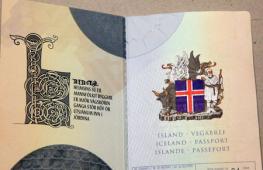We understand the types of Schengen visas - simply and clearly about incomprehensible
Those who wish to make a trip to Schengen useful to learn to navigate in the diversity of species and their designation. It is not as difficult as it seems - the system is simple and understandable. Depending on the goal with which you are heading on the journey, you need different types of visas to the Schengen zone.
What types of visas allow you to travel through the Schengen zone?
- "C" is the short-term, the most common. It allows you to visit Shengen's countries with any objectives that may be required by a bladdant person. You are going to the path on business, personal or family matters, on vacation - it does not matter, it will help to realize all the plans. The only thing that will differ is a set of documents required to confirm the goal of the trip.
The duration differences 4 types:
- "C1" is valid for 30 calendar days. As a rule, it is she called a tourist Schengen visa. And, as already mentioned above, it will be suitable for other purposes. When you first handle the embassy, \u200b\u200byou will most likely be given to it. And if you manifest yourself in traveling as a decent person (simply, if you have no complaints from local law enforcement) - the next time options with a more significant action time will be available.
- "C2" - valid half a year. It is suitable for everyone who wants to spend a lot of time on the near future in Europe. According to the current rules, it is allowed to be in Schengen not more than 90 days over the past six months. Exceptions are present, but for them really need significant foundations - passing a long course of treatment or something no less serious.
- "C3" - the period of action is 1 year, while there are the same limitations as for "C2"
- "C4" - for the most avid travelers, is valid until 5 years. Restrictions The same: allowed to be located on the territory of Shengen not more than 90 days for every six months. At the same time, the limit does not accumulate - skipping a couple of years, you will not be able to take advantage of this fact to extend the time of stay in the current year.
- "D" is a national visa, or long-term. Its validity period is up to 5 years. The difference from "C4" is that it can be in the country that issued it, more than 90 days in a row. In other states entering the Agreement, the limit remains in force. As a rule, it is needed for constant work, and it is much more difficult to get it than C1-C4.
- LTV is a rare version of the Schengen visa, which allows only a short-term stay on the territory of its country. It is impossible to pass with a transit to other States of the Agreement, and it is usually issued from humanitarian considerations.

Visas for tourism
Attention here deserves the view "C". The first for each lingerie is a disposable Schengen visa, but the Multivibuses "C3" and "C4" will become the most desirable. To get them, you need to go to Europe at least 1 time and do not leave bad memory at this: such a tourist will close for a period of six months or more. And the most active "shalama" have all the chances to be given a lifelong ban on the entry, and no pleading "I will no longer" here will not help. Remember that even if the ban will be removed, the visa will be reused much more complicated - for refusal there will be a sufficiently slightest doubt of the consulate staff in the trustworthiness of a person who once has already shown himself from the best side. Therefore, to behave in the journey it is necessary worthy - uncompatible people in Europe are not waiting.
For those who "discipline not a hooligan" and with the law of problems does not have, obtaining multivibuses in the Schengen zone in most cases will be simple: it will certainly be possible for 2 or 3 times in your passport. It is worth remembering, however, that in each state its parameters for the assessment of potential tourists, and some persons get into them will still be somewhat harder. For example, in the Bulgarian consulate may refuse young unmarried girls going on a journey without accompanying.



